Direct Measurements of Colors in Pigments and Surfaces
Microstructure Analyses and CIELab Color Detection
Microscope spectroscopy enables the comparison of different structures and colors. Using A.S. & Co. modules this can be done with highest accuracy and reliability.
Color Distinction on extremely small or curved Structures
In order to specify colors at the limits of optical resolution or on curved surfaces two requirements are essential:
- Extremely small measurement pinholes combined with
- Precise alignment of the illumination arrangement (i.e. micrometer spot illuminations based on confocal principles)
Color distinctions on such small detection areas enable examinations of microstructures. Generated micropatterns on solar cells by laser lithography, for example, optimize the cell efficiency. Special designed A.S. & Co. modules fulfill the requirements to measure colors in these dimensions.
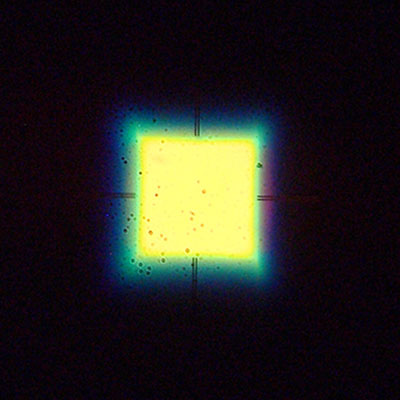
A.S. & Co. Light guide alignment with maximum precision i. e. outline without any color fringes.
© Dr. Steffen Franzka, Center Nano-Integration, Uni. GH Duisb/Essen
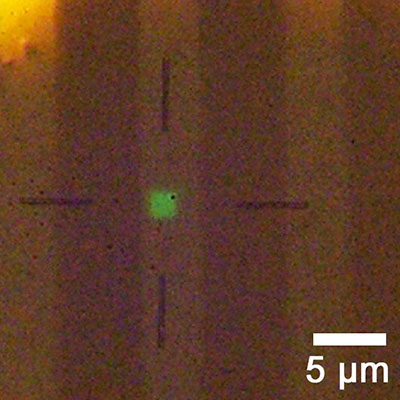
A.S. & Co. Measurement aperture opening of 1 μm projected onto a calibration micrometer plate.
© Dr. Steffen Franzka, Center Nano-Integration, Uni. GH Duisb/Essen
Investigation of Art Objects
Microscope spectroscopy is a basic tool to investigate art objects and to identify counterfeits. Our example shows spectra of two blue pigments. Egyptian blue was extensively used in ancient times as a pigment in paintings and also in ceramic glaze. Synthetic ultramarine blue was produced at the beginning of the nineteenth century. Due to microscopic spectral analyses it is possible to determine production periods and production places of art objects or to recognize, if objects were worked on over a period of several years or centuries.
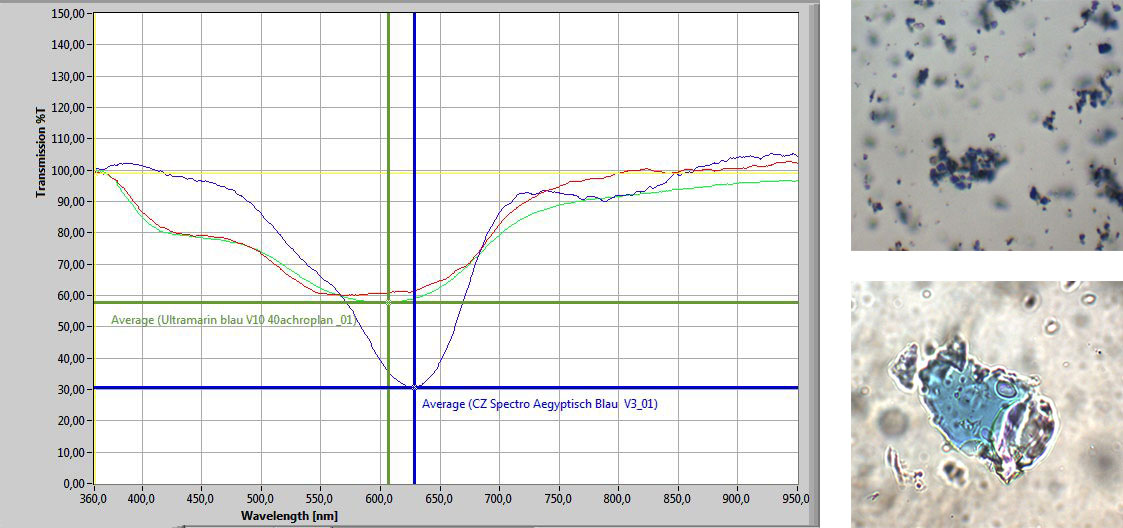
Example Ultramarine Blue (above) versus Egyptian Blue (below). The spectra of both pigments show clear differences. Egyptian Blue: transmission minimum at 635 nm. Ultramarine Blue: broad transmission minimum between 590 nm and 610 nm.
Quality Control of Paints, Coatings, and Autofluorescent Molecules
Microscope spectroscopy also is used in quality control of paints and coatings, because smallest inhomogeneities on pigments or in adjacent areas of color surfaces can be differentiated. The example below displays a total magnification of 2500 x which exceeds the typical optical resolution in light microscopes defined by the laws of Abbe. Nevertheless the various colors can be spectrally resolved and assigned. Even a spot-focused imaging to analyze these color gradients and shifts in an automated process is possible.
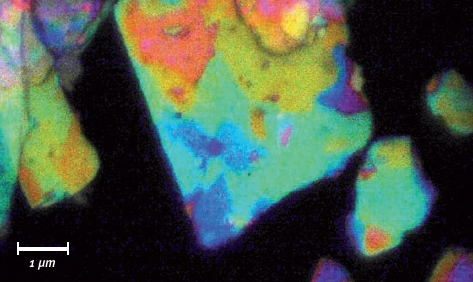
Coated aluflake from a metallic paint.
© A.S. & Co. GmbH
Analyses of Diamonds
The quality of diamonds is defined by its color and the amount of inclusions. The spectroscope allows a gemologist to compare the spectra and ensures an evaluation which is based on the international CIELab regulations of color measurements. It constitutes an elegant way to evaluate inclusions and irregularities and to classify the diamonds according to the established quality classes. Spectral comparisons can be done in the VIS range by stereo-, zoom- or light microscopes. NIR and Raman methods can be attached on request.
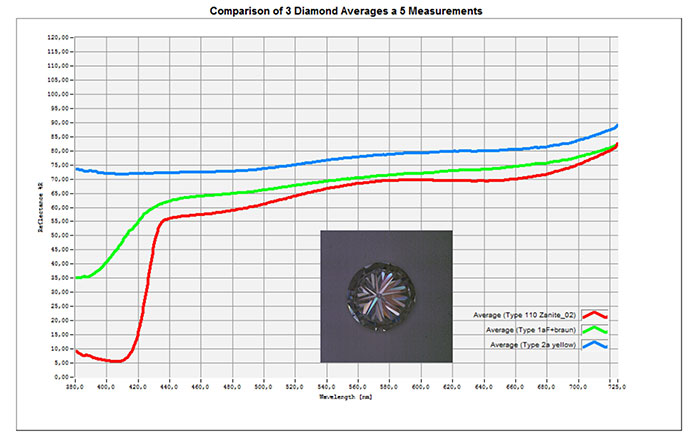
Color comparison among 3 diamonds
© A.S. & Co. GmbH
Further Application Examples:
- Color measurements on fibers, paints, papers, surfaces and wood
- Coating effects of microflakes in paints
- Analysis of pigments in food, drugs and cosmetics
- Composition of chromophoric substances and pigments
- Evaluation of interaction of color and substrate
- Quality control of interference filter spectral properties
- Petrographic analyses and geological maturation studies